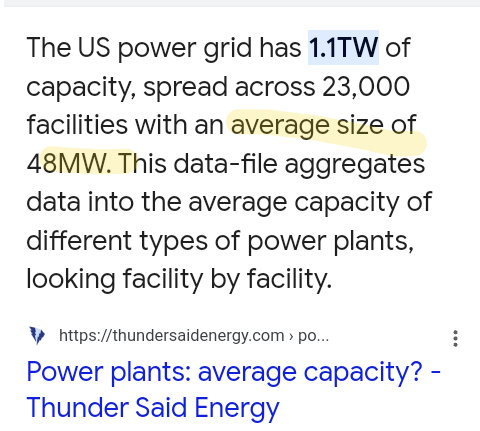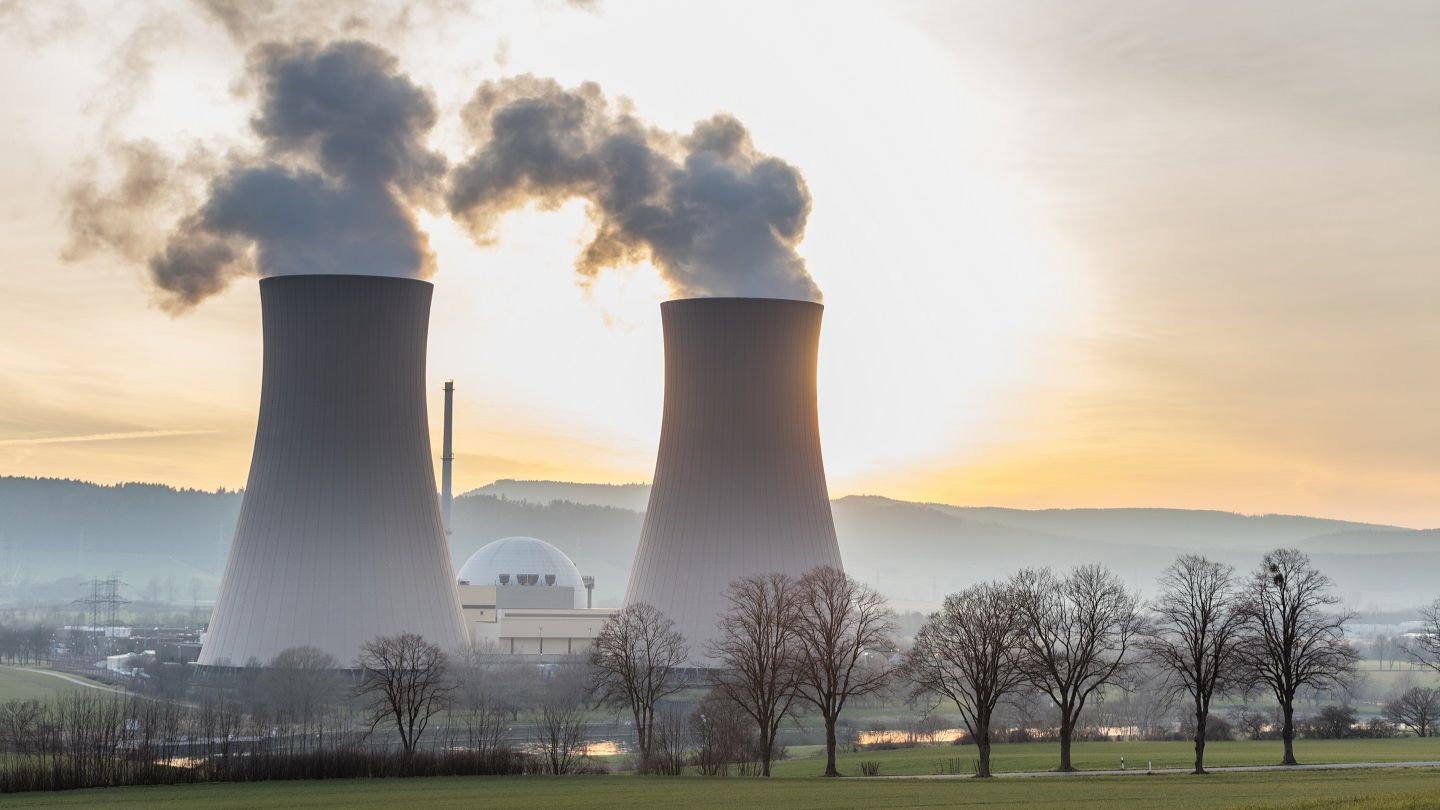- cross-posted to:
- nuclear
- cross-posted to:
- nuclear
NPCI is building two 700MW pressurised heavy water reactors (PHWR), including Units 3 and 4 at Kakrapar, where there are two 220MW power plants. Officials say that in July, the fourth unit recorded 97.56% progress.
Wonder why they’re building these instead of thermal coal plants
The important bit:
NPCI also plans to build a total of 16 700MW of nuclear plants at Rawatbhata, Rajasthan and Gorakhpur, Haryana.
The Indian Government has further approved the construction of ten indigenously built PHWRs across the four states of Haryana, Rajasthan, Madhya Pradesh and Karnataka.
The plan is to ramp up the present nuclear capacity from 7.48GW to 22.4GW by 2031.
deleted by creator
Distributing solar cells and batteries in rural areas would probably be cheaper and help more people.
From a guy that installed a 5kw system on my house in Mexico, Solar non base load systems are so inconsistent that they are a poor choice if you want to really help people. You need base load power generation otherwise you will have very unstable power grids.
It took India 16 years from planning to operation. So it will not only be cheaper, but a lot faster as well.
India is building a ton of solar as well.
The important bit:
Is that India has limited uranium but lots of thorium…
And their over all strategy to get around that includes “coincidentally” making a shit ton of weapons grade plutonium…
https://en.m.wikipedia.org/wiki/India's_three-stage_nuclear_power_programme
That plan from decades ago was to make a few of these so they dont burn through their uranium before they have enough plutonium to start using the thorium.
What Modi is doing doesn’t make sense for that plan, he’s moving to fast and investing too heavily in phase 1.
It only makes sense if he didn’t care about long term nuclear power, and just trying to make as much plutonium 239 as possible. Which would be worth an absolute shit ton of you have no ethics on who you sold it too…
And Modi has spent the last couple years openly saying he doesn’t give a shit about other countries and is fine doing business with anyone.
I’d be surprised if India had trouble finding someone to sell them uranium. Thorium is still a generation away.
Fast breeder reactors with on site fuel reprocessing are still not economical. Thorium is more than a generation away.
-
I think you drastically underestimate what “long term” means when talking about nuclear power
-
The entire reason for India using this method that coincidentally makes weapon grade plutonium is energy independence.
I’d say maybe I didn’t do a good enough job in my summary, but you can just read that linked article if I’m the issue, so I won’t try again
-
And their over all strategy to get around that includes “coincidentally” making a shit ton of weapons grade plutonium…
I browsed the Wikipedia page you linked and there’s a lot of info, could you maybe point me to which section details that part?
deleted by creator
The reason p238 is so valuable is because there’s so little floating around.
I don’t know if NK can do it, I know we’ve started wars over the possibility of middle eastern countries building these reactors.
But think of 238 like diamonds. They’re expensive because basically one group controlls the supply.
If even just a couple groups can supply it, suddenly the price plummets and the market floods with product.
It would be like the crack epidemic from the 80s.
Also:
I doubt Modi would sell plutonium to anybody
Dude just spent years literally telling everyone that will listen he values money over the lives of any foreign citizen…
Buying Russian gas helped fund their invasion of Ukraine, and Modi flat out said over and over he didn’t care because it was the cheapest India could get.
Why the fuck do you think India’s government grew morals overnight?
India has nuclear bomb doesn’t it? The plutonium would be for them I expect. There are more than some nuclear powers around them.
India currently has a plutonium stockpile that would allow them to assemble around 1k plutonium pits for bombs on top of the current hundred or so bombs they have. They’re quite flush with the stuff. Pakistan mostly uses high enriched uranium for bombs.
We need this badly. It’s the stop-gap until we get fusion reactors online. Nuclear is a clean energy as long as it’s maintained correctly.
Fusion reactors might be hundreds of years away, if they are possible at all.
But nuclear power is perfect for bridging such long times. This unit took 16 years from planning to full operation. So we won’t be done soon, if we go this route.
We’ve had several net positive fusion tests. I believe they’re possible. The science is there. How long it takes is another matter.
Mathematically net positive. As calculating the fusion’s released energy versus what was needed to get it there. As far as I know there is no technology yet on how to utilize and extract that energy. So zero kWh produced for now.
Then you still have loss in the generators or turbines. And then it needs to be able to run 24/7 instead of split seconds, which brings the problem of how to add fuel constantly and how to remove the fusion’s results.
It might be possible but I doubt we are somewhat near.
ITER will adress almost all of your concerns and is the capstone of international fusion collaboration. It’s also well on its way to being completed. It is still a research reactor, so it won’t actually be generating for the grid. It is expected to achieve long pulse fusion with Q=10 where the majority of heating to sustain the reaction comes from the fusion.
They will spend a while testing the plasma conditions and very low fusion amounts to test shielding before moving on to full power fusion runs. If the full power fusion runs work as designed, that should provide enough data to prove out commercial generating designs. ITER should be the final plasma dynamics research tokamak needed. Demonstration plants should be simpler, and hence faster and cheaper to build than ITER.
Full power runs will generate 500MW from 50MW input power. That’s plenty of efficiency to still produce meaningful power after collection and generating inefficiencies.
I’m not denying the science, it is mathematically possible and I actually love the science behind it and reading about it.
I just say we are not yet near fusion power, I think. ITER will start experiments probably this decade. After that they plan to build DEMO, a follow up project which will deliver a little power.
Keep in mind that these reactors are very difficult to built, still. It takes decades to build even without delays.
Fusion is a beautiful source of energy, but it’ll still take time. I don’t think for example that fusion will play a major role in the transition away from fossil fuels as that needs to happen much faster.
deleted by creator
It’s interesting that India is building lots of heavy water reactors, because they produce tritium, which would be useful for bootstrapping fusion: https://www.science.org/content/article/fusion-power-may-run-fuel-even-gets-started
Makes having a robust nuclear weapons program cheaper too. It’s the primary maintenance cost in maintaining modern nuclear weapons. Due to the short half life of tritium and it turning into neutron absorbing He3 you need to refresh it every 10 years or so for each bomb.
No no, definitely fusion. Not nuclear bombs.
Oh and the plutonium produced will be stored in our super safe facility over here. Please don’t look into it.
A sufficiently-large pile of cash could redirect that tritium from weapons to fusion development when the time comes. Seems better than not having enough supply anywhere.
Truth is if the economics are there, tritium is not a problem. You just put lithium-6 in a reactor with an irradiation channel and breed it that way (its what the soviets did in many reactors including Chernobyl). All lithium-6 is currently used to make fusion bombs, though.
India likes CANDU based reactors like this because they don’t want to enrich uranium. They focus on plutonium production for their bombs and want to eventually create plutonium breeder reactors for a thorium fuel cycle.
Edit: the fact that they natively breed tritium without a dedicated lithium channel is good for fusion or variable yield bomb initiators too.
700MW isn’t much, but I see they plan to build 16 which is a bit more significant (2023 usage is 236.59 and rising). Are they planning to ramp up 15GW by 2031 using these planned plants? The math checks out on the generation, but it does not check out on the timeline. 2 more are reportedly largely complete, but on the other hand 10 have just received approval. These appear to mostly be similar designs, and for context this particular unit took three years from achieving criticality to supplying power.
I have some other concerns/questions about the plan other than what appears to be an impossible timeline - like how well they’ve modeled the risk of local climate change on their cooling ponds. It’s not that nuclear is bad, I’m just wondering if the priorities were correctly evaluated here - or if things like corruption might be at play.
isn’t much compared to what?

Mmmm exlusion zone roulette





